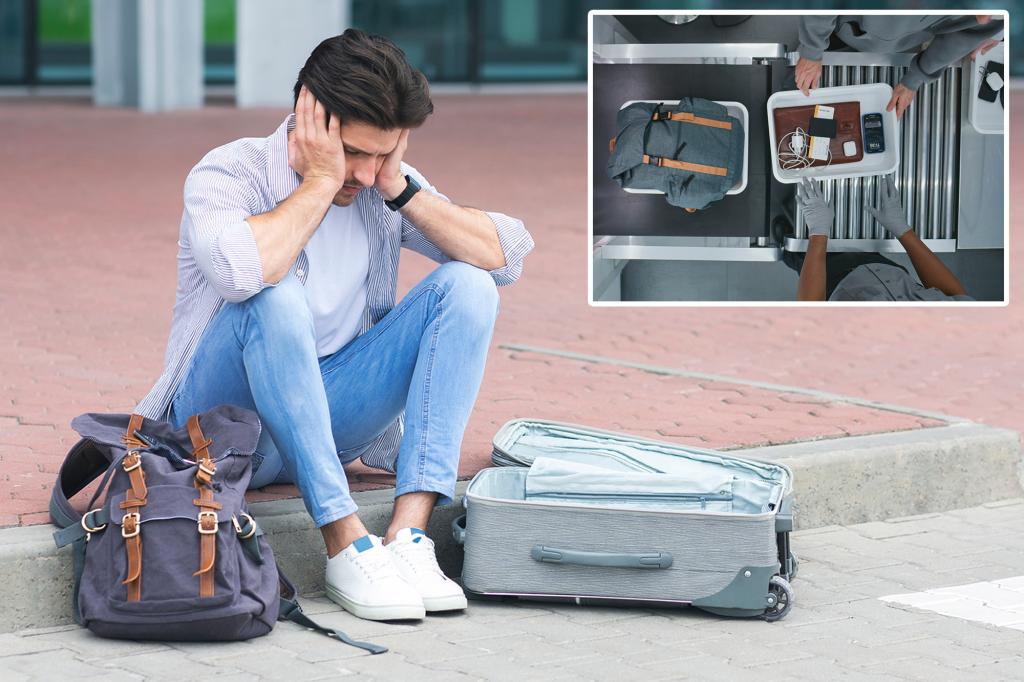Don’t let this mishap ruin your trip.
According to the TSA, close to 100,000 lost items are recovered each year. In the rush and chaos, it’s possible that you could leave something behind — so what do you do?
Luckily, the TSA and many airlines are willing to help you get your belongings back, though it’s not as simple as turning around and getting them yourself.
Getting off the plane only to realize you’ve left something behind is a horrible feeling, especially if it’s something important like earbuds, a laptop or your child’s favorite stuffed animal.
Unfortunately, you won’t be able to go back onto the aircraft to get it — but you can ask a member of the flight crew to help you out.
A spokesperson for Delta told Afar that flight attendants and gate agents can lend a hand in a situation where the passenger realizes almost immediately that they’ve left something behind. If you haven’t left the gate area yet, these staff members will be happy to assist.
But if you’ve already headed out and it’s too late to ask an agent, your best option is to go to the airline’s website and fill out a report for a lost item. Delta, American, United and JetBlue all follow this protocol.
For Southwest, passengers are told to notify customer service prior to leaving the airport, then fill out an online report once home or at the final destination.
These online forms can also be used to report lost items at the gate area. Passengers have thirty days before the airline will determine the item to be unable to be found, and they’ll be contacted via email if and when the item is found.
United’s lost item form states that shipping costs are the responsibility of the passenger, but some cases allow for a no-cost airport pickup.
Meanwhile, if you’ve left something at security and have time before boarding, you can head back to security and ask to speak with a supervisor.
“If the item has been found, it can easily be returned,” Lisa Farbstein, a spokesperson for the TSA, told Afar.
However, if you don’t realize your item is missing until after you’ve taken off, Farbstein advised to reach out to TSA through the Lost and Found page where you’ll be asked to enter the airport name or code, and their may be a phone number to call or a form to fill out as well.
At New York’s John F. Kennedy International Airport — one of the busiest airports in America — you’ll need to fill out a form and provide the date, the approximate time the item was lost and a description of the item. Farbstein said the more detailed the description, the better.
For example, if you left behind a phone, tablet or laptop, you’ll want to provide the airport with the make and model as well as any details that set the item apart from others, such as color, description of the case and even the lock-screen photo.
TSA will then use that information to check if the item has been left behind at the airport’s security checkpoint.
“If so, we’re pleased to make sure that the traveler can be reunited with their item,” Farbstein explained. “This is one of those customer services that we offer that most travelers are probably unaware of.”
The TSA will hold items left behind for a minimum of 30 days or until its been returned to the owner. Farbstein said that there’s no maximum amount of time the TSA will hold onto items, but higher-value items are often held for longer in hopes that the owner will realize where it was left.
If a high-value item is not claimed by a rightful owner, it will be either destroyed or sold — with the money helping to pay off national debt.
According to the TSA, “money from the sale of all lost and found items goes to the U.S. Department of the Treasury and into a general fund used to pay towards the U.S. national debt.”
In general, Farbstein suggested that travelers go by the following guidelines:
- If you left the item on a plane: Contact the airline.
- If you left the item in the airport terminal (restroom, gate area, restaurant): Contact the airport.
- If you left the item in a rental car: Contact the rental car company.
- If you left an item at a security checkpoint: Contact TSA.
Read the full article here







